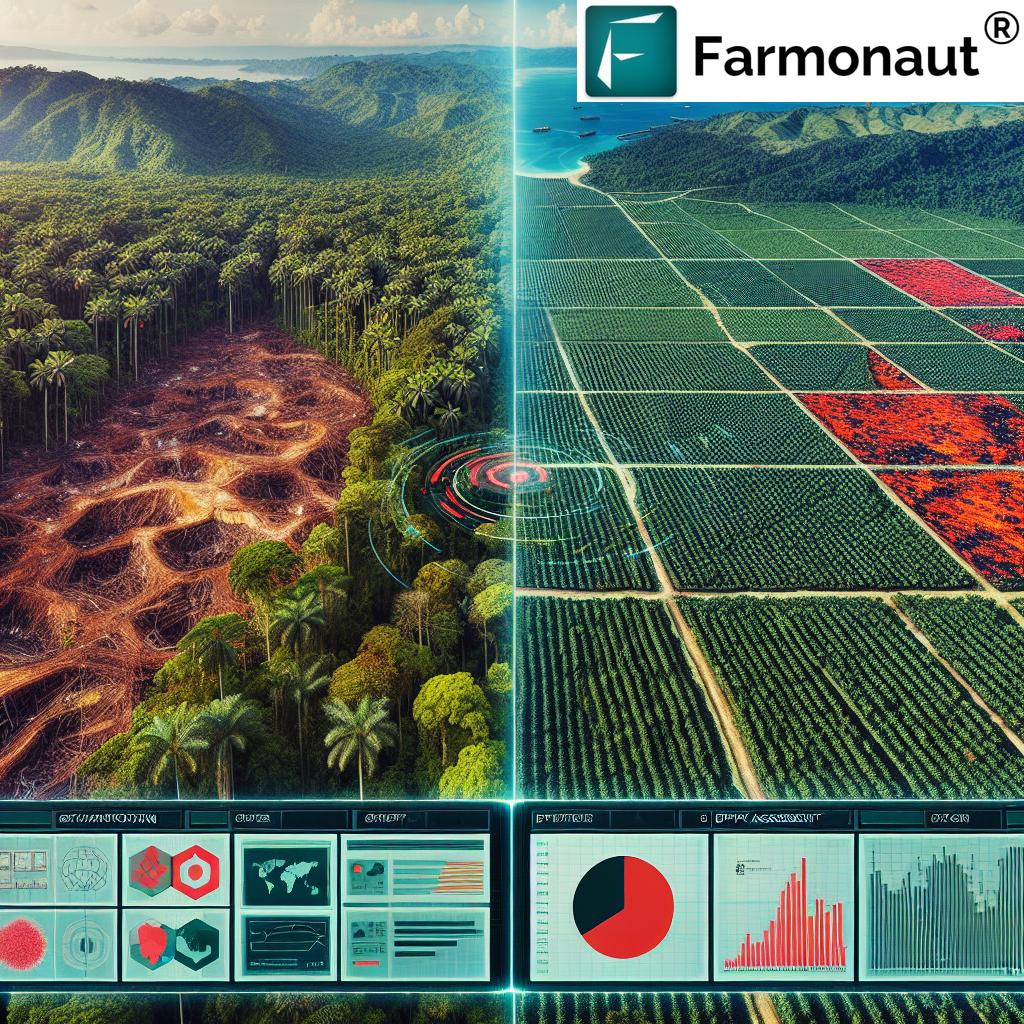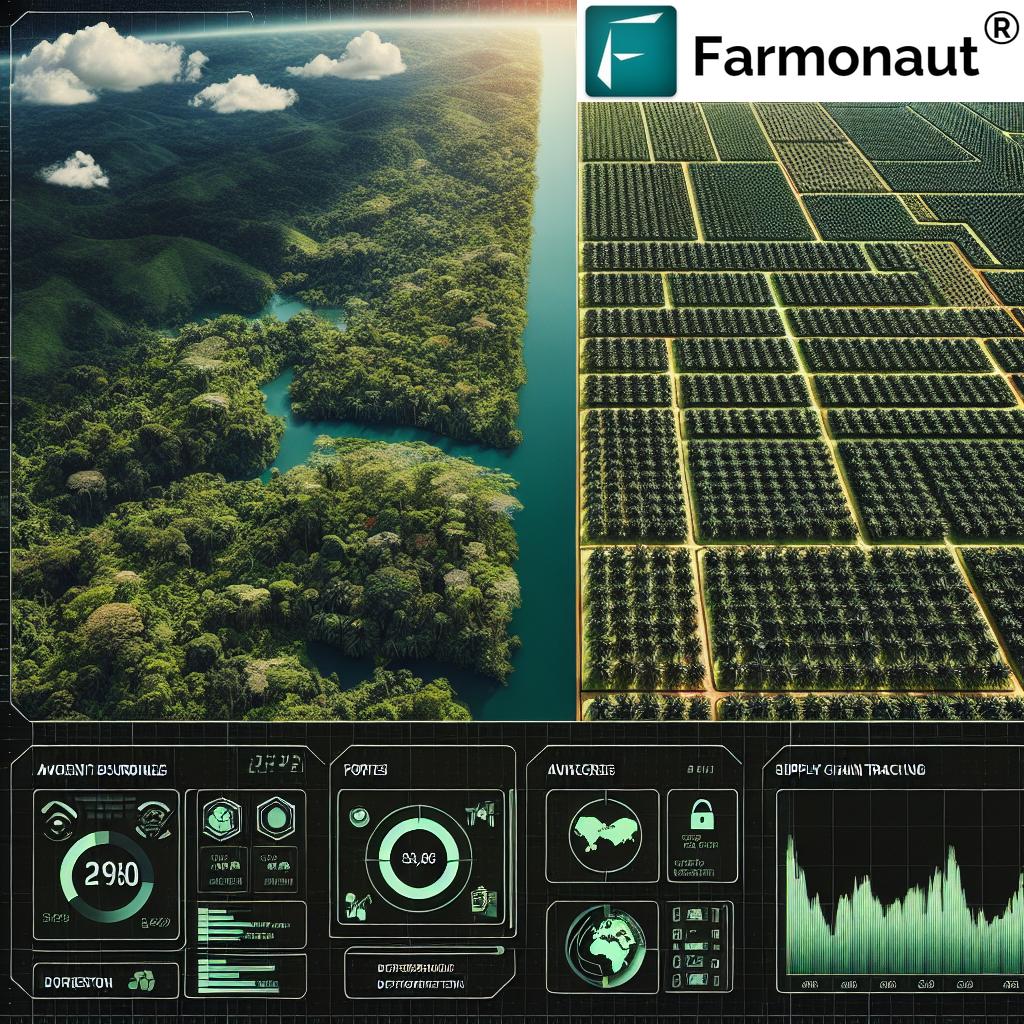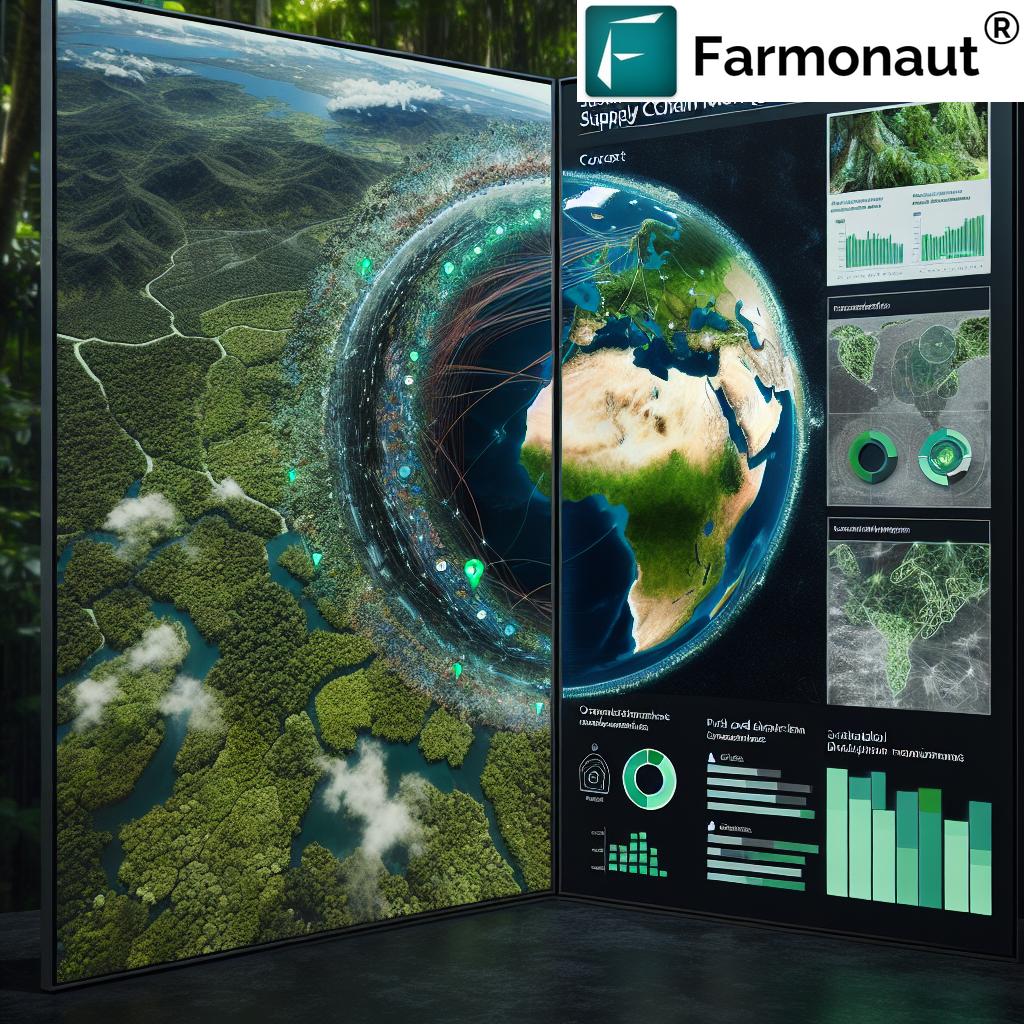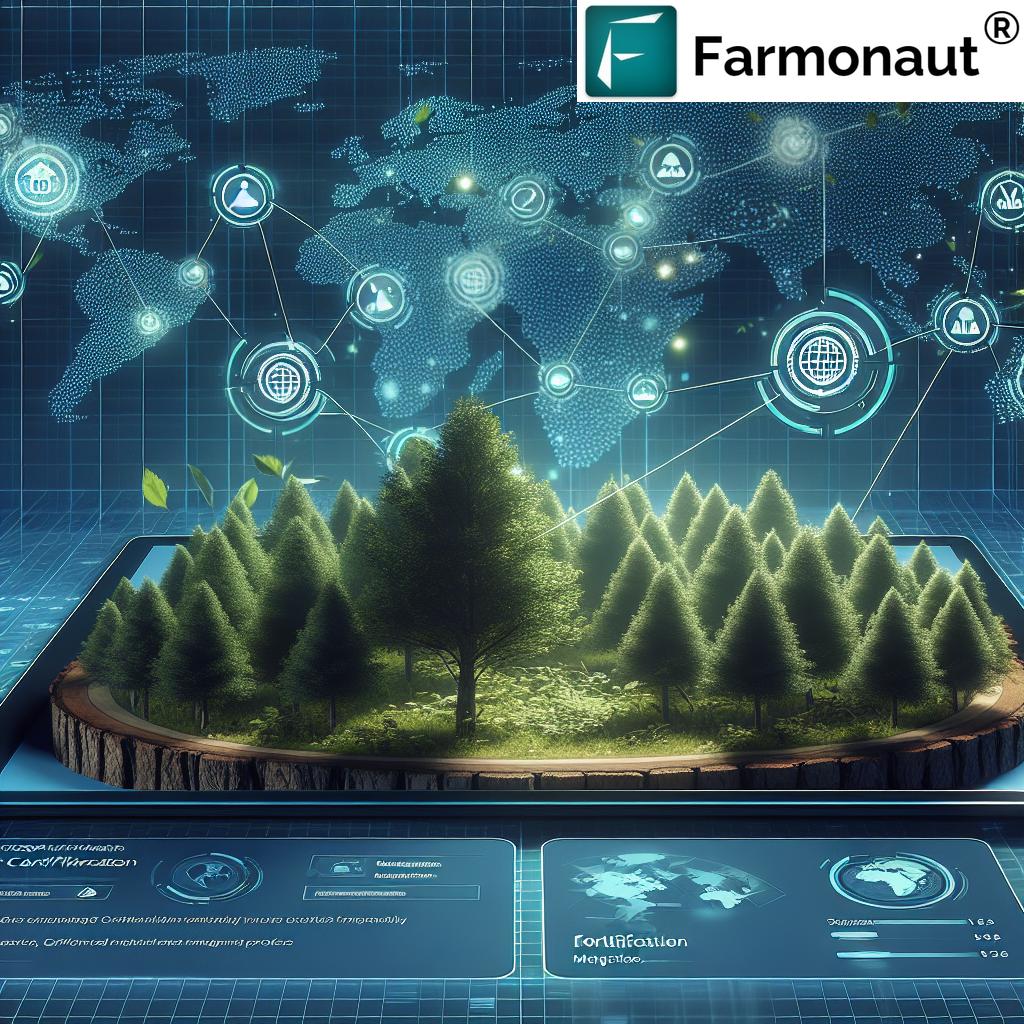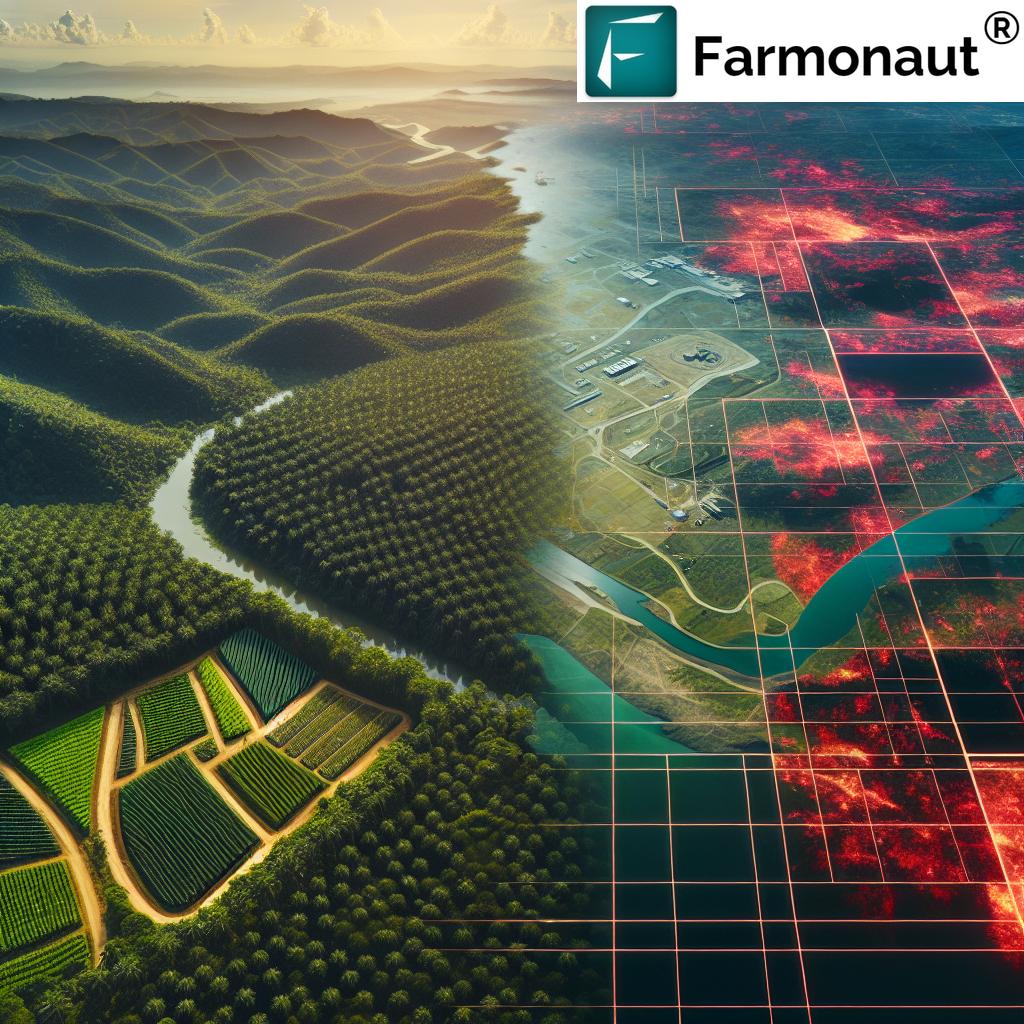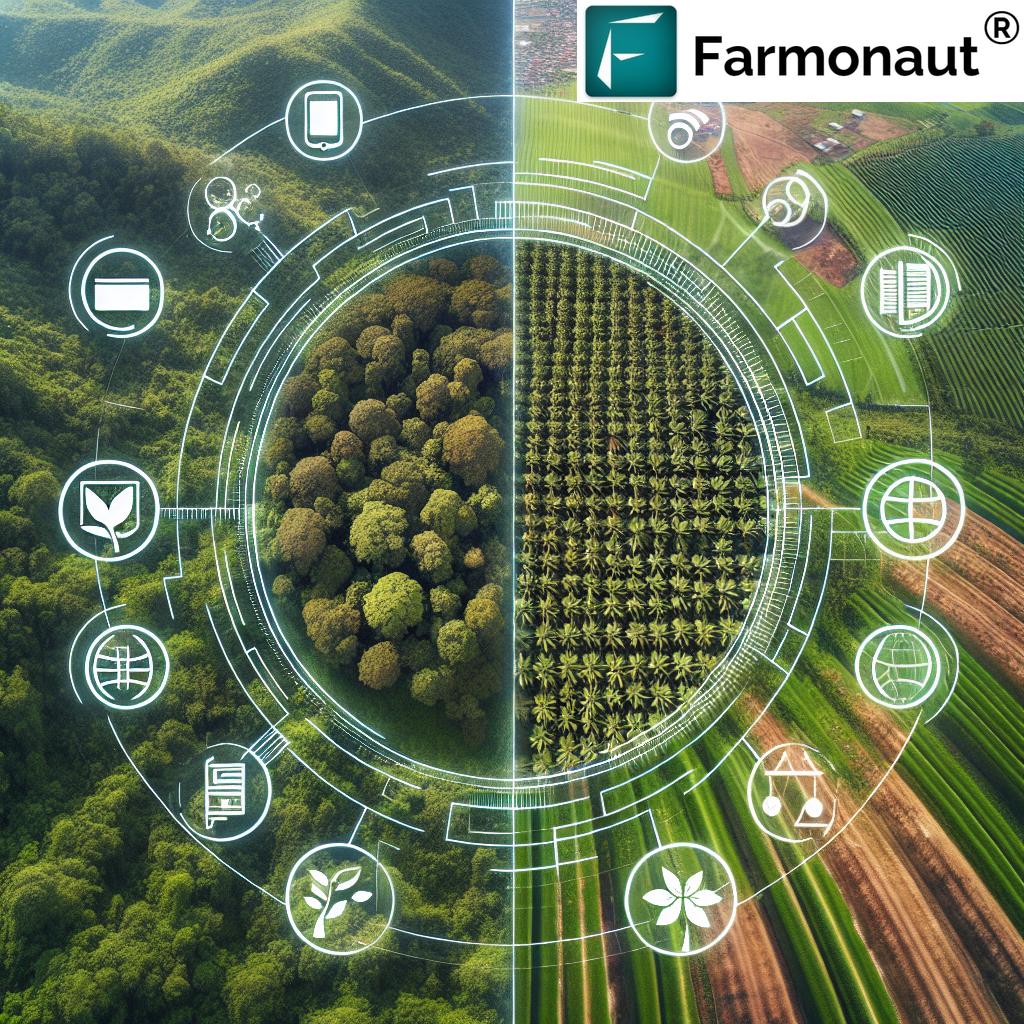Unveiling the Hidden Cost: How Fashion’s Leather Supply Chain Impacts Amazon Deforestation
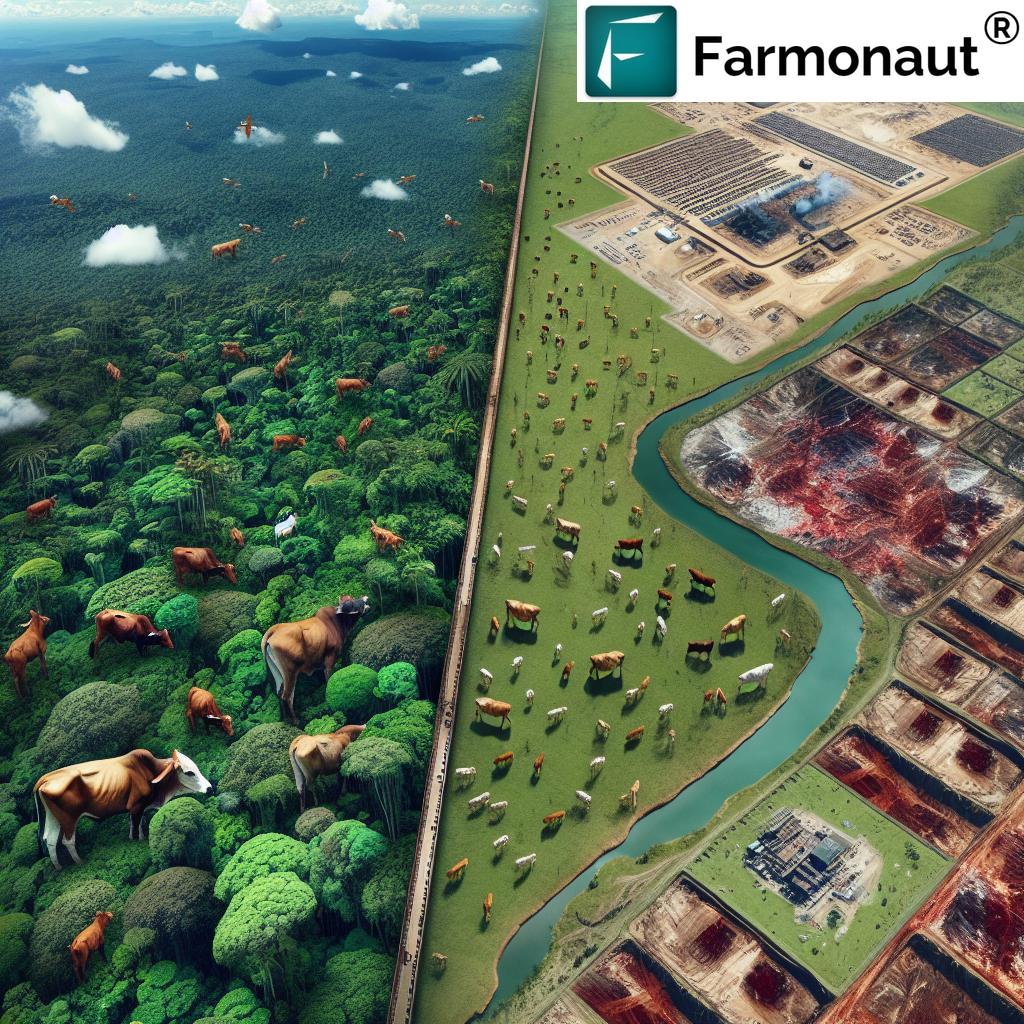
In the ever-evolving world of fashion, we often overlook the hidden environmental costs associated with our wardrobe choices. One of the most pressing issues in this realm is the intricate link between the fashion industry’s leather supply chains and deforestation in the Amazon rainforest. As we delve into this complex relationship, we’ll uncover the challenges faced by sustainable sourcing practices and explore innovative solutions that are shaping the future of fashion industry sustainability.
“The EU Deforestation Regulation affects fashion brands sourcing leather from regions linked to 80% of global deforestation.”
The Hidden Connection: Fashion and Amazon Deforestation
The fashion industry’s appetite for leather has far-reaching consequences that extend deep into the heart of the Amazon rainforest. As we unravel this complex web, it becomes clear that our clothing choices have a direct impact on one of the world’s most crucial ecosystems.
- Cattle Ranching: The primary driver of deforestation in the Amazon
- Leather Production: A significant by-product of the beef industry
- Supply Chain Complexity: Obscuring the origins of leather used in fashion
The demand for leather in the fashion industry fuels cattle ranching expansion in the Amazon. This expansion leads to clearing vast areas of pristine forest, disrupting delicate ecosystems and contributing to climate change. The challenge lies in tracing the leather back to its source, as complex supply chains often mask the true origins of the materials used in our favorite fashion items.
The Environmental Impact of Fashion’s Leather Obsession
The environmental impact of fashion’s reliance on leather extends far beyond the immediate loss of forest cover. It encompasses a range of issues that affect both local and global ecosystems:
- Biodiversity Loss: Destruction of habitats for countless species
- Carbon Emissions: Deforestation releases stored carbon into the atmosphere
- Water Cycle Disruption: Altered rainfall patterns affecting agriculture
- Soil Degradation: Erosion and loss of fertility in cleared areas
These impacts collectively contribute to the acceleration of climate change, making the fashion industry’s role in Amazon deforestation a critical issue that demands immediate attention and action.
Traceability in Agriculture: A Key to Sustainable Sourcing
One of the most promising solutions to combat deforestation in the fashion supply chain is the implementation of robust traceability systems in agriculture. By leveraging advanced technologies, we can create transparent supply chains that allow brands and consumers to make informed decisions about the products they produce and purchase.
Farmonaut, a pioneering agricultural technology company, offers innovative solutions that can significantly contribute to this effort. Their platform provides valuable services such as real-time crop health monitoring, AI-based advisory systems, and blockchain-based traceability tools. These technologies can be instrumental in establishing deforestation-free supply chains in the fashion industry.
To learn more about Farmonaut’s solutions, visit their web app:
Satellite Monitoring: Eyes in the Sky for Forest Protection
Satellite monitoring has emerged as a powerful tool in the fight against deforestation. This technology allows for real-time observation of forest cover changes, enabling quick responses to illegal clearing activities.
“Satellite monitoring can detect deforestation activities as small as 10 square meters, aiding in sustainable leather sourcing efforts.”
Farmonaut’s expertise in remote sensing and agricultural monitoring offers valuable perspectives on how technology can support sustainable sourcing and reduce environmental impact. Their satellite-based crop health monitoring system can be adapted to track forest health and detect early signs of deforestation.
The EU Deforestation Regulation: A Game-Changer for Fashion Brands
The European Union’s Deforestation Regulation is set to reshape the landscape of global supply chains, particularly in the fashion industry. This landmark legislation aims to prevent products linked to deforestation from entering the EU market, placing significant pressure on fashion brands to ensure their leather supply chains are deforestation-free.
- Due Diligence Requirements: Brands must verify that their products are not linked to deforestation
- Traceability Mandates: Detailed information on product origins must be provided
- Penalties for Non-Compliance: Significant fines and market access restrictions
For fashion brands, compliance with the EU Deforestation Regulation will require a complete overhaul of their sourcing practices and supply chain management. This presents both challenges and opportunities for innovation in sustainable leather production.
Progress and Shortcomings in Sustainable Leather Production
The fashion industry has made strides in addressing the issue of deforestation in their leather supply chains, but significant challenges remain. Let’s examine the progress and shortcomings of various companies in implementing sustainable leather production methods:
| Brand Name | Estimated Annual Leather Consumption (tons) | Estimated Deforestation Impact (hectares) | Traceability Measures | Supplier Engagement Score (1-10) | Sustainable Sourcing Initiatives | EU Deforestation Regulation Compliance Status |
|---|---|---|---|---|---|---|
| EcoChic | 5,000 | 2,500 | High | 9 | Certified leather from deforestation-free sources | Compliant |
| LuxeLeather | 15,000 | 7,500 | Medium | 6 | Partial traceability, working on full supply chain visibility | In Progress |
| TrendyTogs | 8,000 | 4,000 | Low | 3 | Limited initiatives, mainly focused on recycled materials | Non-Compliant |
| GreenGlam | 3,000 | 1,500 | High | 8 | Innovative plant-based leather alternatives | Compliant |
| ClassicCouture | 20,000 | 10,000 | Medium | 5 | Implementing blockchain traceability for select product lines | In Progress |
| UrbanEdge | 6,000 | 3,000 | Low | 2 | No specific initiatives for leather sourcing | Non-Compliant |
| EconoChic | 12,000 | 6,000 | Medium | 4 | Piloting traceability program in select regions | In Progress |
| LuxeSustain | 4,000 | 2,000 | High | 9 | 100% traceable leather, supporting reforestation projects | Compliant |
As we can see from the table, there’s a wide spectrum of progress among fashion brands. While some companies like EcoChic and GreenGlam are leading the way with high traceability measures and strong supplier engagement, others like TrendyTogs and UrbanEdge are lagging behind. The challenge lies in bringing all players in the industry up to the standards set by the EU Deforestation Regulation.
Engaging Suppliers: A Crucial Step Towards Sustainability
One of the key factors in achieving deforestation-free supply chains is the engagement of suppliers. Fashion brands must work closely with their leather suppliers to ensure that sustainable practices are implemented throughout the supply chain.
- Education and Training: Providing suppliers with knowledge about sustainable practices
- Incentives: Offering financial or contractual benefits for meeting sustainability targets
- Collaborative Problem-Solving: Working together to overcome challenges in implementation
- Long-term Partnerships: Building trust and stability in the supply chain
By fostering strong relationships with suppliers, fashion brands can create a more resilient and sustainable leather supply chain. This not only helps in complying with regulations but also contributes to the overall goal of Amazon rainforest conservation.
Promoting Amazonian Conservation Efforts
Beyond addressing their own supply chains, fashion brands have an opportunity to actively contribute to Amazonian conservation efforts. By investing in reforestation projects, supporting local communities, and promoting sustainable land use practices, the fashion industry can play a pivotal role in preserving this crucial ecosystem.
- Reforestation Initiatives: Funding tree planting programs in deforested areas
- Community Support: Providing alternative livelihoods for local populations
- Sustainable Agriculture: Promoting practices that reduce the need for forest clearing
- Consumer Education: Raising awareness about the impact of fashion choices on the Amazon
By taking a holistic approach to sustainability, fashion brands can not only mitigate their environmental impact but also contribute positively to the preservation of the Amazon rainforest.
The Role of Technology in Sustainable Sourcing
As we navigate the complexities of sustainable leather sourcing, technology emerges as a powerful ally. Innovative solutions can help fashion brands achieve transparency, traceability, and sustainability in their supply chains.
Farmonaut’s expertise in agricultural technology offers valuable insights into how these tools can be applied to the fashion industry. Their platform’s capabilities in satellite monitoring, AI-driven analytics, and blockchain-based traceability can be adapted to address the specific challenges of leather sourcing.
To explore Farmonaut’s innovative solutions:
- API Integration: https://sat.farmonaut.com/api
- API Developer Docs: https://farmonaut.com/farmonaut-satellite-weather-api-developer-docs/
For mobile access to Farmonaut’s tools:
The Future of Sustainable Fashion: Balancing Style and Responsibility
As we look to the future, it’s clear that the fashion industry must evolve to meet the demands of both style-conscious consumers and a planet in crisis. The path forward involves a delicate balance between innovation, sustainability, and consumer education.
- Alternative Materials: Developing and scaling up sustainable leather alternatives
- Circular Economy: Implementing recycling and upcycling programs for leather products
- Transparency: Providing consumers with detailed information about product origins
- Collaboration: Industry-wide initiatives to address common challenges
By embracing these principles, the fashion industry can work towards a future where style doesn’t come at the cost of our planet’s forests.
Conclusion: A Call to Action for Sustainable Fashion
The intricate link between fashion’s leather supply chains and Amazon deforestation presents a complex challenge, but it’s one that we must address urgently. As consumers, industry professionals, and global citizens, we all have a role to play in promoting sustainable fashion practices.
By supporting brands that prioritize transparency and sustainability, demanding better practices from the industry, and making informed choices about our purchases, we can contribute to the preservation of the Amazon rainforest and the creation of a more sustainable fashion industry.
The journey towards deforestation-free supply chains is not an easy one, but with continued innovation, collaboration, and commitment, we can create a fashion industry that values both style and environmental responsibility. Let’s work together to unveil and address the hidden costs of our clothing choices, ensuring a brighter future for both fashion and our planet.
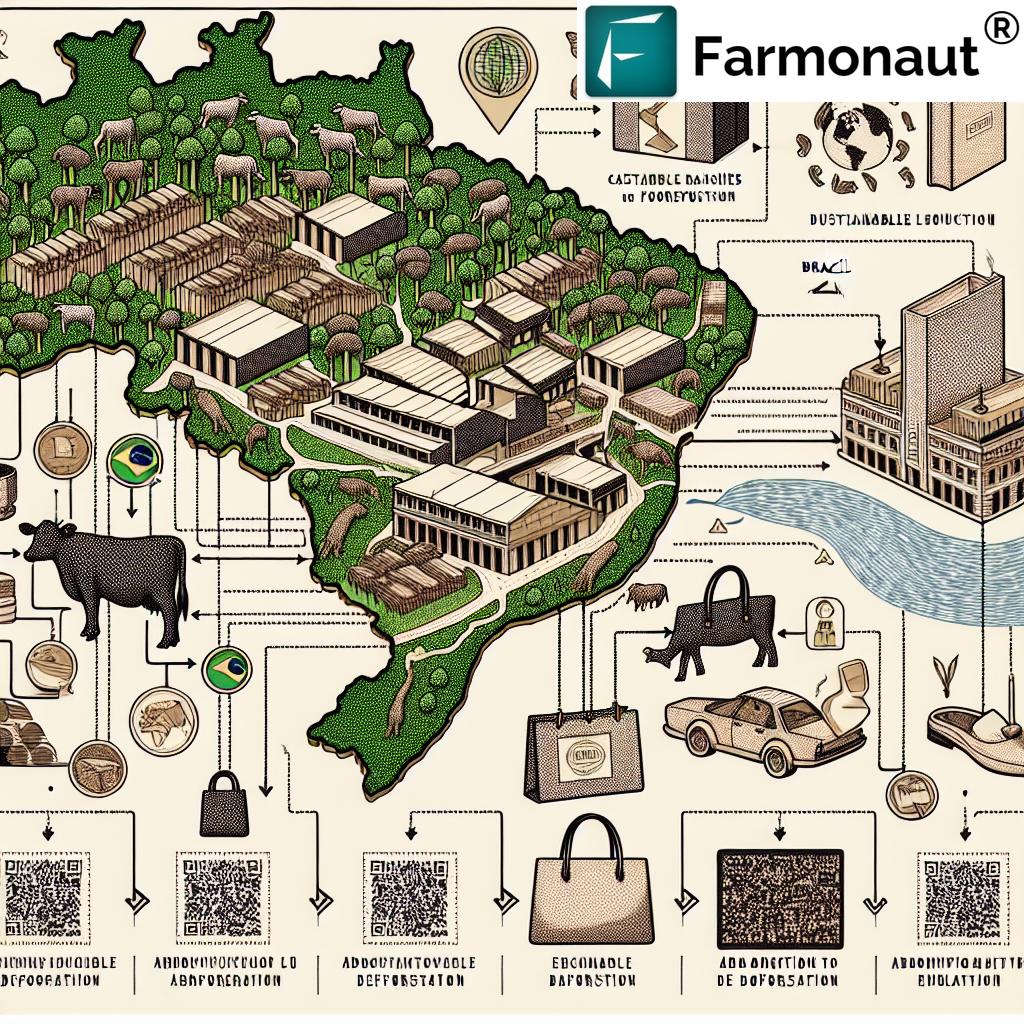
FAQs: Fashion’s Impact on Amazon Deforestation
- How does leather production contribute to Amazon deforestation?
Leather production is closely linked to cattle ranching, which is a primary driver of deforestation in the Amazon. As demand for leather increases, more forest areas are cleared for pasture. - What is the EU Deforestation Regulation, and how does it affect fashion brands?
The EU Deforestation Regulation is a legislation that aims to prevent products linked to deforestation from entering the EU market. It requires fashion brands to ensure their leather supply chains are deforestation-free through due diligence and traceability measures. - How can consumers make more sustainable choices when buying leather products?
Consumers can look for brands that prioritize transparency and sustainable sourcing, choose products made from certified deforestation-free leather, or opt for alternative materials like plant-based leather. - What role does technology play in creating sustainable leather supply chains?
Technology, such as satellite monitoring, blockchain-based traceability, and AI-driven analytics, helps in tracking the origins of leather, monitoring forest cover, and ensuring transparency throughout the supply chain. - Are there alternatives to traditional leather that are more sustainable?
Yes, there are various alternatives including plant-based leathers made from materials like pineapple leaves, cork, or mushrooms, as well as recycled and upcycled leather products.
Explore Farmonaut’s Sustainable Solutions
Farmonaut offers innovative tools that can be adapted to support sustainable practices in the fashion industry. Explore our subscription options to see how our technology can contribute to your sustainability goals:
By leveraging technology and sustainable practices, we can work together to create a more responsible and environmentally friendly fashion industry. Let’s take the first step towards a greener future for fashion and our planet.










